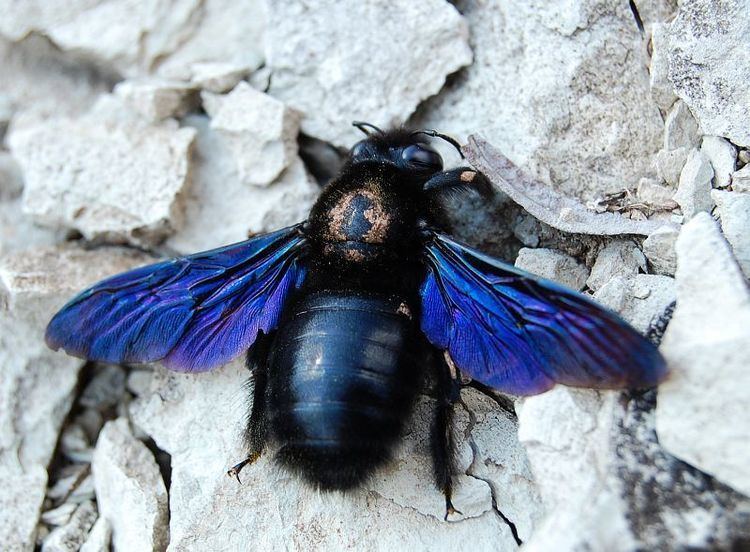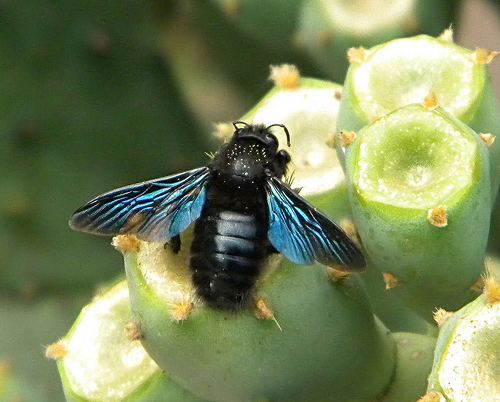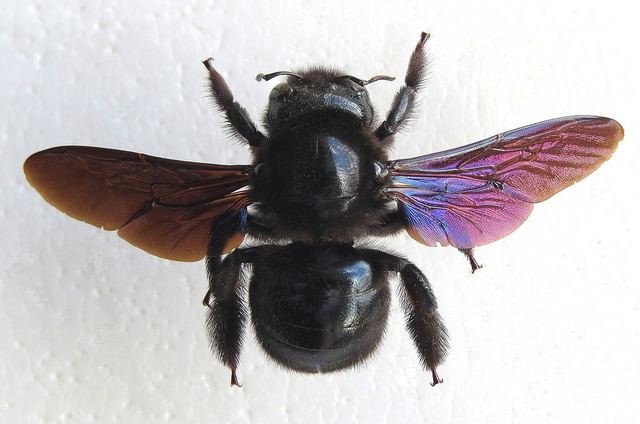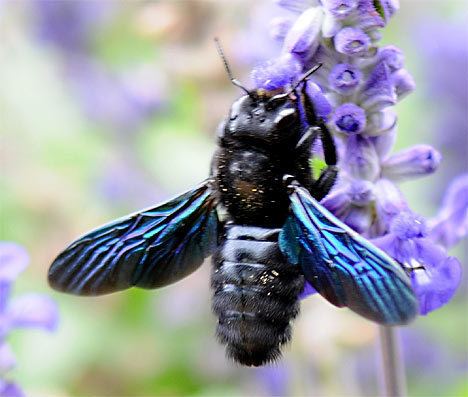Superfamily Apoidea Scientific name Xylocopa violacea Rank Species | Suborder Apocrita Higher classification Carpenter bee | |
 | ||
Similar Carpenter bee, Bee, Insect, Hymenopterans, Xylocopa valga | ||
Xylocopa violacea, the violet carpenter bee, is the common European species of carpenter bee, and one of the largest bees in Europe. It is also native to Asia.
Contents

Like most members of the genus Xylocopa, it makes its nests in dead wood. It is not particularly aggressive, and will attack only if forced to.

Albina violet dulgher carpenter bee xylocopa violacea apidae
Distribution

The range of Xylocopa violacea extends from Europe eastward across Asia as far as central China, restricted to latitudes above 30 degrees. In India, any all-black species of Xylocopa are referred to by the common name "bhanvra", and reports and sightings of bhanvra are commonly misattributed to this species; however, this species is found only in the northern regions of Jammu and Kashmir and Punjab. Most sightings refer to any of several other common black Xylocopa, such as X. nasalis, X. tenuiscapa, or X. tranquebarorum.

In 2006 Xylocopa violacea was reported from Cardigan, Wales. In 2007 it was found breeding for the first time in England, in Leicestershire. This follows a northwards expansion of its range in France, Germany, and the Channel Islands. In 2010 it was recorded in Northamptonshire and Worcestershire.
Description
Violet carpenter bees hibernate overwinter and they emerge in the spring, usually around April or May. Hibernation is undertaken by the adults in wood where there are abandoned nest tunnels. In the late spring or early summer, they may be seen around searching for mates and suitable nesting sites. After mating, the gravid females bore tunnels in dead wood, which is where the name "carpenter bee" comes from, although old nest tunnels may be used.
Like other solitary bees, the female creates the nest alone. The eggs are laid within a series of small cells, each of which is supplied with a pollen ball for the larvae to feed upon. The adults emerge in late summer then hibernate until the following year.
